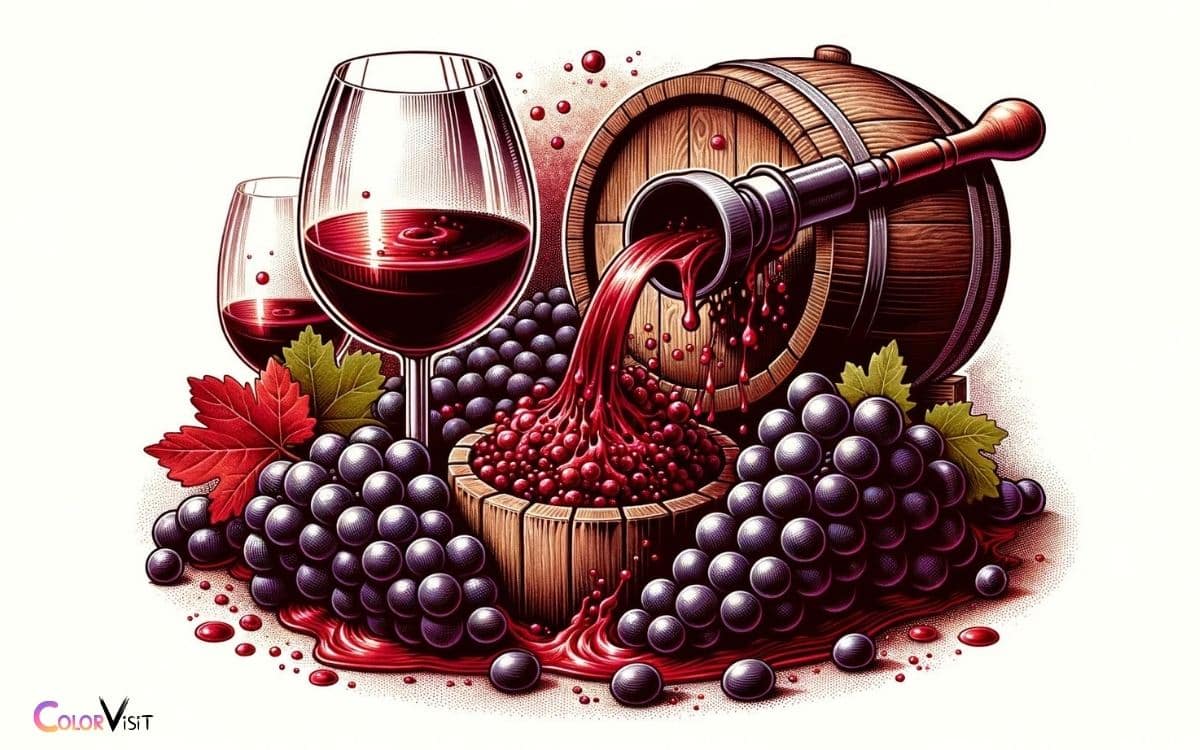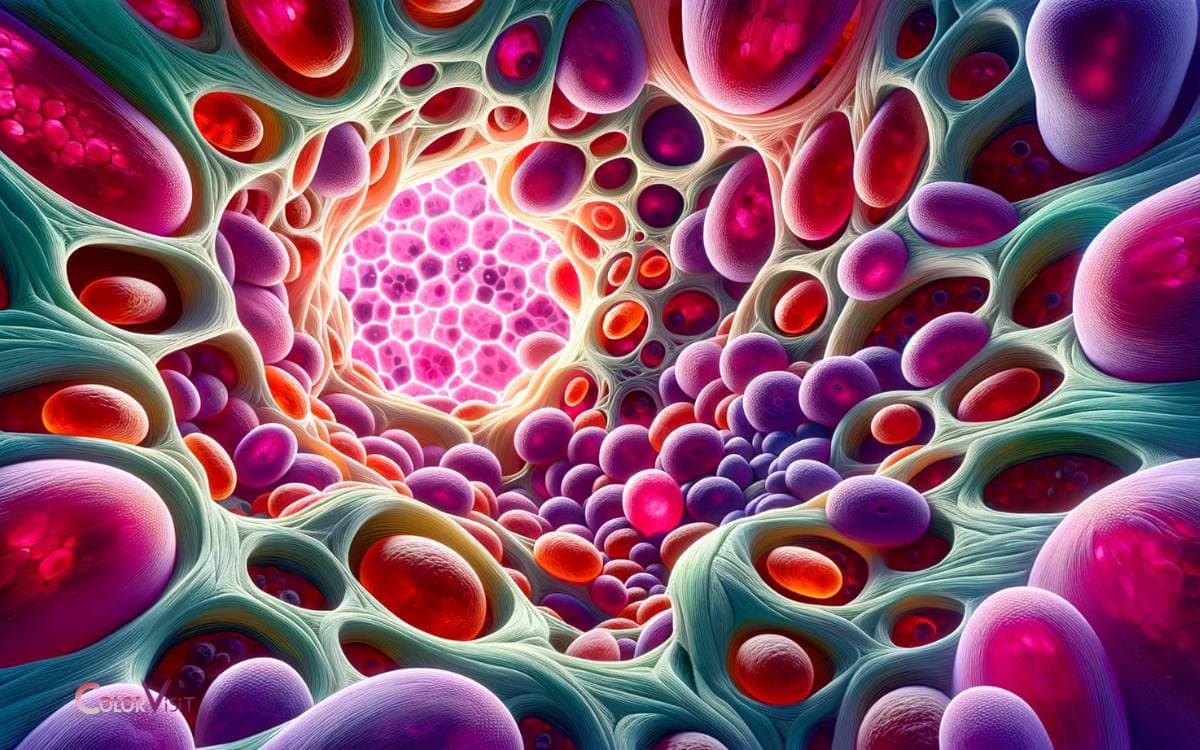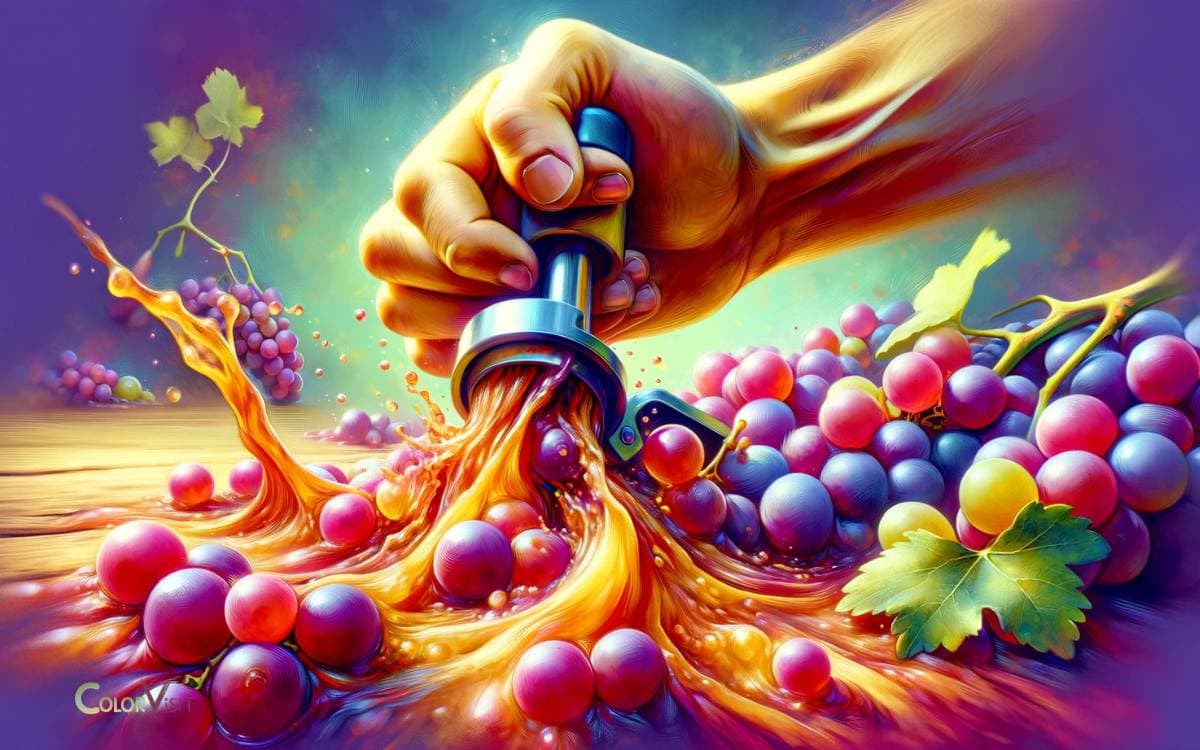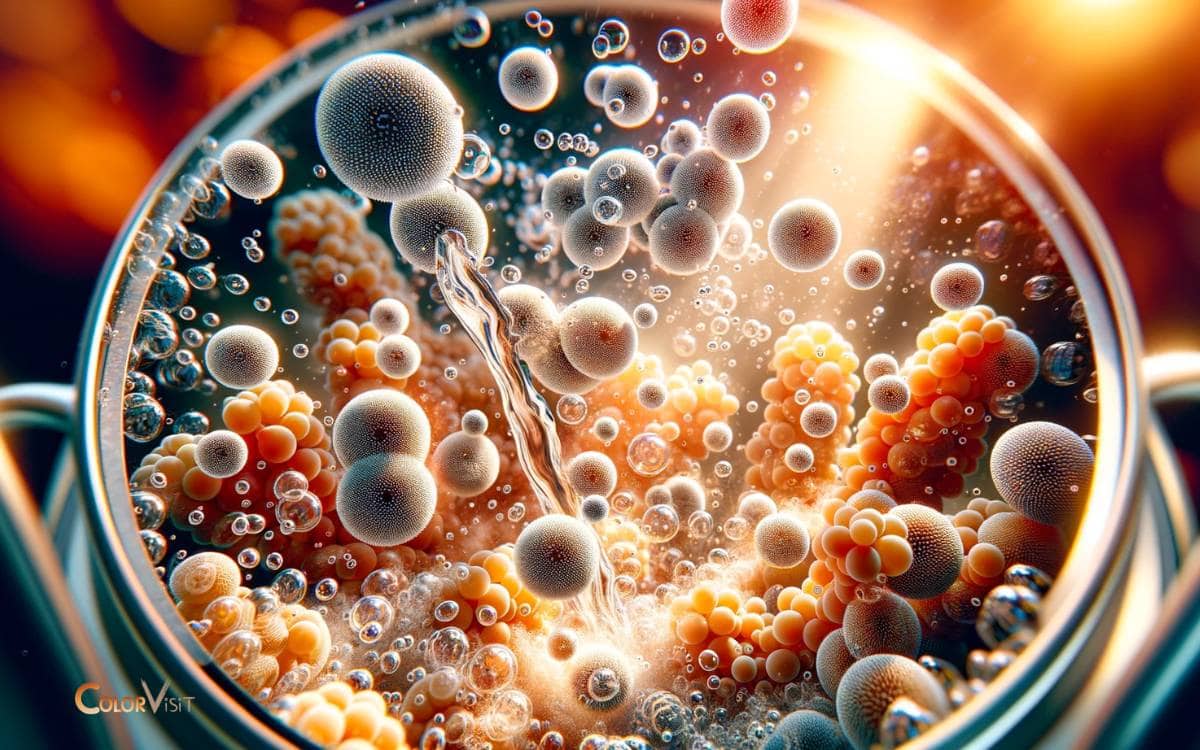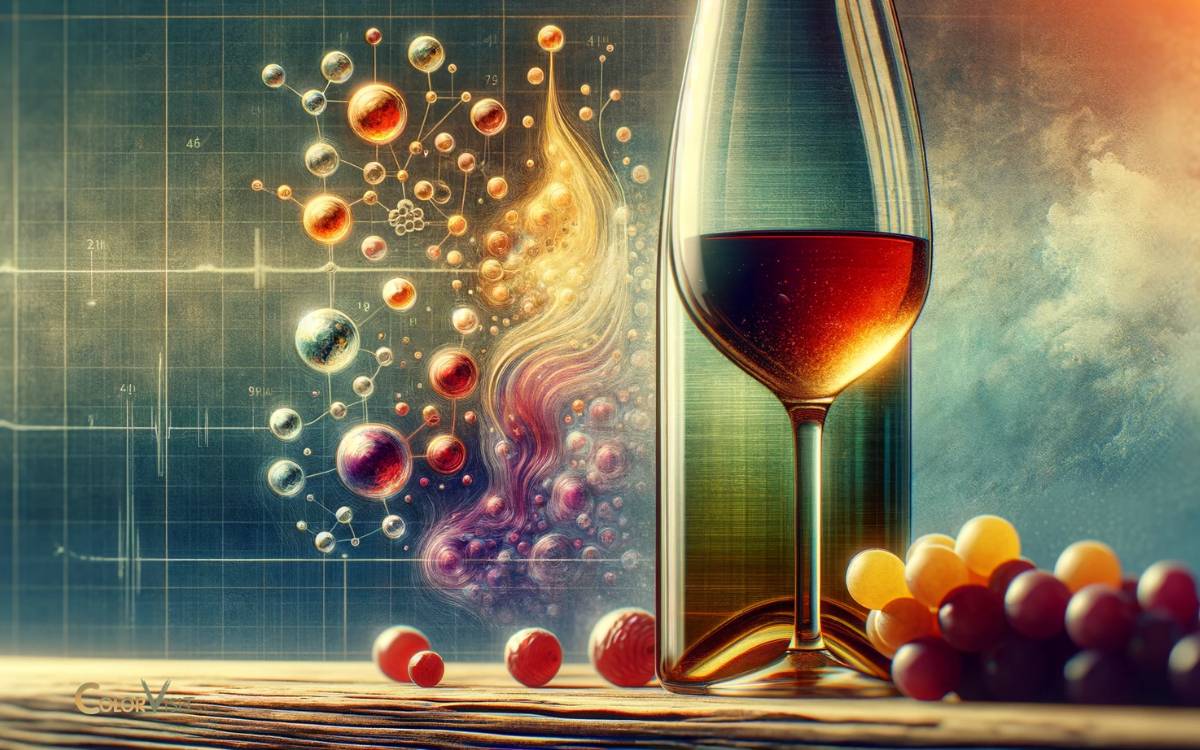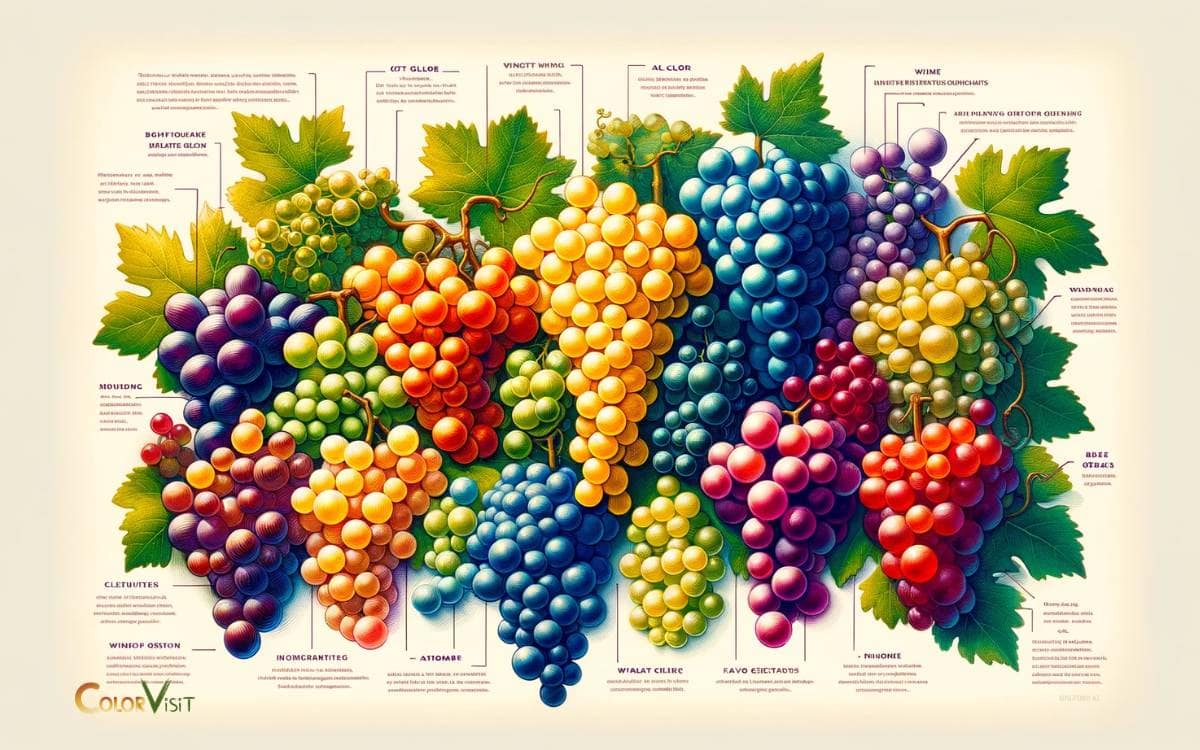How Does Red Wine Get Its Color? Anthocyanin Pigments!
Red wine gets its color from the anthocyanin pigments present in the grape skins.
The color intensity depends on the duration of skin contact during the maceration process and the aging period. Varietal influences also play a pivotal role in determining the wine’s hue.
The captivating color of red wine is a complex interplay between grape variety, maceration, and aging.
Key Takeaway
Anthocyanin Pigments
Anthocyanin pigments are commonly found in red wine grapes, often occurring with varying levels of concentration and distribution.
- These pigments are responsible for the red, purple, and blue colors in the grapes and, subsequently, in red wine.
- The color extraction process from the grape skins during winemaking involves the chemical composition of anthocyanins, which are water-soluble and pH-dependent.
- The extraction of these pigments is a delicate balance of time, temperature, and maceration techniques, as they are located in the skin of the grape.
- Anthocyanins belong to the flavonoid class of polyphenolic compounds, and their chemical composition determines the intensity and hue of the red wine.
Understanding the behavior of anthocyanins during winemaking is crucial for achieving the desired color and enhancing the overall quality of red wines.
Grape Skin Contact
During the winemaking process, the extraction of color from the grape skins occurs through contact with the grape must, allowing for the transfer of compounds responsible for the red, purple, and blue hues in red wine.
- This skin extraction is a crucial stage in the production of red wine, as it directly influences the color development and contributes to the overall sensory experience.
- The duration of grape skin contact is carefully managed by winemakers to achieve the desired color intensity and style of the wine.
- This process involves balancing the extraction of pigments, tannins, and flavor compounds to create a harmonious and complex final product.
The table below illustrates the main components extracted during grape skin contact, showcasing the intricate nature of this winemaking phase:
| Extracted Component | Influence on Wine |
|---|---|
| Anthocyanins | Color intensity |
| Tannins | Structure |
| Flavor compounds | Complexity |
| Polyphenols | Mouthfeel |
Maceration Process
During maceration, the grape skins are left in contact with the fermenting juice, facilitating color extraction from the skin pigments.
- This process is crucial for red wine production as it allows the phenolic compounds in the skins to dissolve into the wine, imparting both color and flavor.
- The length of maceration directly impacts the wine’s final characteristics; a longer maceration period generally results in deeper color and more complex flavors due to increased extraction of tannins and other compounds from the skins.
- Winemakers carefully monitor this process to achieve the desired balance of color, tannin, and flavor, ultimately shaping the profile of the red wine.
- The maceration process thus plays a pivotal role in determining the quality and style of the final product.
Fermentation Impact
Fermentation plays a crucial role in determining the color and flavor profile of red wine.
The contact between the grape skins and the fermenting juice influences the extraction of color and tannins.
Additionally, the temperature and oxygen exposure during fermentation also impact the chemical reactions that contribute to the final characteristics of the wine.
Grape Skin Contact
Red wine acquires its characteristic color through the process of grape skin contact during fermentation.
- This crucial stage involves skin extraction, where the grape skins are in contact with the fermenting juice.
- The duration of this contact impacts the color extraction and other compounds present in the wine.
- Anthocyanins, the pigments found in grape skins, are responsible for the red color of the wine.
- During skin contact, these compounds leach into the grape juice, imparting the desired red hue to the wine.
- Winemakers carefully control the duration of skin contact to achieve the desired color intensity and flavor profile.
This innovative process allows for the creation of a wide variety of red wines with distinct colors and characteristics, showcasing the artistry and science behind winemaking.
Oxygen Exposure Effects
During the fermentation process, controlled exposure to oxygen can significantly impact the development and characteristics of red wine.
Oxygen plays a crucial role in modulating chemical reactions that occur during fermentation, which in turn affects the final taste, aroma, and color of the wine.
The following are some key effects of oxygen exposure on red wine during fermentation:
- Accelerated Fermentation: Controlled oxygen exposure can speed up the fermentation process, leading to a more efficient extraction of flavor compounds from the grape skins.
- Tannin Polymerization: Oxygen exposure can facilitate the polymerization of tannins, resulting in smoother and more complex tannin structures.
- Color Stabilization: Moderate oxygen exposure can help stabilize the color of red wine by promoting the formation of pigmented polymers.
- Aromatic Development: Oxygen exposure can enhance the development of desirable aromas in red wine.
- Minimization of Reduction: Controlled oxygen exposure helps minimize reduction, leading to improved wine quality.
These effects underline the significance of managing oxygen exposure during red wine fermentation to achieve desired sensory attributes and quality.
Fermentation Temperature Influence
The controlled exposure to oxygen during red wine fermentation can significantly influence the fermentation temperature, thereby impacting the overall development and characteristics of the wine.
Temperature control during fermentation plays a crucial role in determining the color extraction and overall quality of red wine.
By carefully managing the temperature, winemakers can achieve optimal color extraction and enhance the desired flavor profile of the wine.
The table below illustrates the influence of fermentation temperature on color extraction and wine characteristics:
| Fermentation Temperature | Color Extraction | Wine Characteristics |
|---|---|---|
| Low | Lighter hues | More delicate flavors |
| Moderate | Balanced hues | Well-rounded profile |
| High | Deeper hues | Rich and intense flavors |
Understanding the impact of fermentation temperature on color extraction and wine characteristics allows winemakers to craft wines with specific attributes, meeting the evolving preferences of wine enthusiasts.
Aging and Oxidation
As red wine ages, oxidation processes occur, influencing its color and flavor profile. The aging process, which involves the gradual exposure of the wine to air, plays a crucial role in the development of red wine’s color and flavor complexities.
Here are five key points to consider regarding the aging and oxidation of red wine:
- Oxygen interaction with phenolic compounds leads to the development of a softer and more complex flavor profile.
- Tannins in red wine undergo polymerization, resulting in a smoother mouthfeel and a change in color intensity.
- Anthocyanins, responsible for the red color in wine, can evolve into more brick or orange hues as the wine ages.
- Controlled oxidation during aging can enhance the aromatic qualities of the wine, leading to a more expressive and nuanced bouquet.
- Proper cellar conditions, including temperature and humidity control, are essential for facilitating the beneficial oxidative reactions while preventing detrimental effects such as premature aging.
Varietal Influence
When it comes to understanding how red wine gets its color, varietal influence plays a crucial role.
The color of the grape skins and the presence of anthocyanins in the grape varietals are key factors that contribute to the coloration of red wine.
Exploring the varietal influence on red wine coloration sheds light on the unique characteristics and complexities that different grape varieties bring to the winemaking process.
Grape Skin Coloration
Red wine’s color is influenced by the grape skin’s coloration, which varies depending on the grape varietal.
The grape varietal plays a crucial role in determining the color extraction and skin pigmentation, ultimately affecting the hue, depth, and vibrancy of the resulting red wine.
Here are five key factors related to grape skin coloration and varietal influence:
- Anthocyanin Content: Different grape varietals have varying levels of anthocyanins, the compounds responsible for red wine color.
- Thickness of Skins: The thickness of grape skins differs among varietals, impacting the amount of pigments released during maceration.
- Sun Exposure: Varietals grown in sunnier regions often develop darker pigmentation due to increased sun exposure.
- Age of Vines: Older grapevines may produce grapes with more concentrated pigmentation, affecting the wine’s color.
- Genetic Factors: Genetic variations in grape varietals can lead to diverse skin colors, influencing the final wine’s appearance.
Anthocyanin Presence
The presence of anthocyanins in grape varietals significantly influences the color extraction process and contributes to the distinctive hues found in red wines.
- Anthocyanins, a class of pigments present in grape skins, are responsible for the red, purple, and blue colors in various grape varieties.
- During winemaking, the color development in red wines is a result of chemical reactions between anthocyanins and other compounds.
- The levels of anthocyanins vary among grape varieties, leading to differences in color intensity and tonality.
- For example, grapes with higher anthocyanin content tend to produce wines with deeper, more saturated colors.
Winemakers carefully consider the anthocyanin profiles of grape varietals when crafting red wines, as they play a pivotal role in determining the final color and visual appeal of the wine.
Conclusion
In the intricate process of winemaking, red wine gets its color from the anthocyanin pigments found in grape skins.
Through the grape skin contact, maceration process, and fermentation impact, the color is deepened and enriched.
As the wine ages and undergoes oxidation, its color evolves and matures. Varietal influence also plays a key role in determining the final hue of the red wine.
Just as a painter carefully selects their palette, winemakers meticulously craft the color of their wines.
